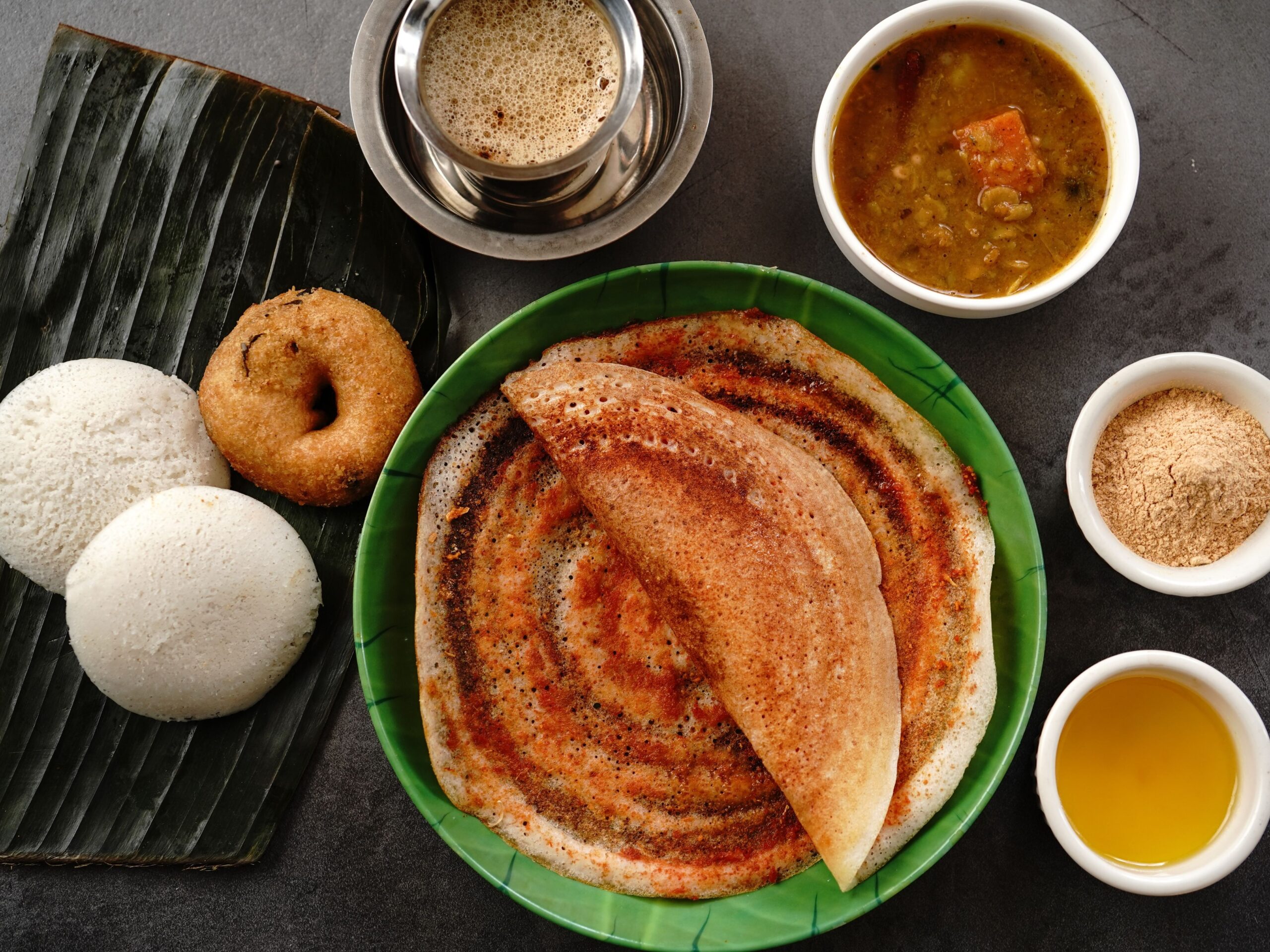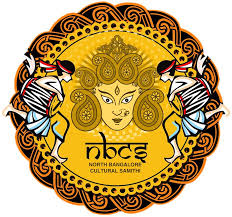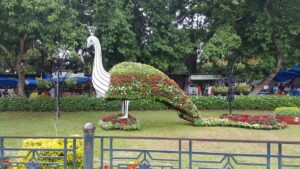
A cosmopolitan city, Bangalore is frequently referred to as the “Silicon Valley of India” and is home to many different cultures, customs, and culinary traditions. Due to the city’s rich history, geographic variety, migratory population, and exposure to the world, its culinary scene has seen a dramatic change over time. Bangalore’s culinary culture is an intriguing combination of tradition and creativity, ranging from traditional recipes handed down through the centuries to contemporary fusion cuisine trends.
The development of Bangalore’s culinary culture is examined in this blog, along with its origins, variety of flavours, and contemporary culinary trends that are revolutionising the city’s current eating habits.
The Traditional Roots of Bangalore's Cuisine
Bangalore’s culinary legacy is heavily inspired by traditional South Karnataka cuisine, especially Old Mysore specialities, as it was formerly a part of the Mysore Kingdom. Ingredients including rice, lentils, coconut, ragi (finger millet), and a variety of regional spices form the basis of this culinary heritage.
Typically served on a banana leaf, a classic Bangalorean dinner consists of the following:
- Ragi Mudde (millet balls) served with spicy soppina saaru (greens curry)
- Bisi Bele Bath, a one-pot dish made with rice, lentils, vegetables, and tamarind
- Mysore Rasam, a spicy-sour soup with a hint of sweetness
- Kosambari, a refreshing lentil and vegetable salad
- Chutneys and pickles using native ingredients like mango, gooseberry, or garlic
In addition to being delicious, these foods are nourishing and climate-appropriate. For example, the usage of ragi indicates a preference for fibrous, cooling foods that are perfect for the semi-arid Deccan plateau.
Through prasadam (holy food offerings), which are frequently based on old recipes, temples in and around Bangalore, such the Bull Temple in Basavanagudi or the ISKCON temple in Rajajinagar, also play a significant role in maintaining culinary traditions.
The Influence of Migration on Food Diversity
As Bangalore developed into a significant metropolis, waves of migrants from all across Karnataka, India, and the world arrived. The city’s cuisine culture gained complexity as a result of the distinct culinary influences each community contributed.
- Tamil Brahmin cuisine introduced sambar, vatha kuzhambu, and curd rice traditions.
- Andhra settlers brought spicy flavors like gongura pachadi and fiery biryanis.
- Muslim communities popularized Donne Biryani, a unique variety cooked in dried palm leaf cups with minimal masala and maximum flavor.
- Marwaris and Gujaratis added sweet-savory snacks like dhokla, kachori, and farsan.
- North Indian flavors, especially Punjabi and Mughlai, became popular through eateries and street stalls.
As a result of British colonial control, Bangalore’s Anglo-Indian population have contributed unique delicacies including railway mutton curry, pepper water, and meatball curry. Some of these traditional recipes are still served at bakeries like Albert Bakery, Thom’s, and Koshy’s.
Iconic Eateries and Old Bangalore Food Culture
The city’s storied culinary establishments characterise its more traditional culinary identity. Some of the most popular traditional dining venues can be found in places like Malleswaram, Basavanagudi, and Jayanagar:
- CTR (Central Tiffin Room) in Malleswaram, known for its crispy buttery dosas
- Vidyarthi Bhavan in Gandhi Bazaar, famous for its heritage-style benne dosa
- MTR (Mavalli Tiffin Room), which introduced the world to ready-to-eat rava idli during World War II
- Shivaji Military Hotel, a go-to place for meat lovers and donne biryani fans
These restaurants are cultural monuments that preserve the flavours and friendliness of ancient Bangalore in addition to delivering delectable meals.
The Rise of Global Cuisines and Modern Trends
Bangalore’s cuisine culture quickly changed as it became a global centre for technology. Italian, Thai, Chinese, Korean, Japanese, Continental, Lebanese, and other international cuisines are now available in the city.
Popular communities like Whitefield, Koramangala, and Indiranagar are teeming with:
- Microbreweries and gastro pubs serving beer-infused pizzas and global bar snacks
- Vegan cafes and organic restaurants, reflecting the city’s growing health consciousness
- Korean and Japanese joints catering to expats and adventurous foodies
- Fusion restaurants blending Indian ingredients with Western cooking styles
Food delivery has been transformed by startups and cloud kitchens, and tech parks are becoming popular locations for multi-cuisine food courts.
Lorem ipsum dolor sit amet, consectetur adipiscing elit. Ut elit tellus, luctus nec ullamcorper mattis, pulvinar dapibus leo.
Street Food: The Pulse of Everyday Bangalore
Without including Bangalore’s street food, no description of the city’s culinary scene would be complete. Roadside kiosks in Jayanagar or the busy VV Puram Food Street are only two examples of how the city lives on:
- Masala dosa and idli-vada combos with coconut chutney
- Chaat varieties like pani puri, masala puri, and dahi puri
- Obbattu (holige) – a sweet stuffed flatbread made during festivals
- Akki rotti, spicy rice-based flatbread, grilled with onions and chilies
- Mangalore buns, deep-fried banana puris served with spicy curry
The “Food Street” (Thindi Beedi) in VV Puram is especially well-known for its food vendors that serve hot dosas, bondas, vadas, and desserts at night.
Cultural Shifts and Culinary Innovation
The younger generation in Bangalore has been instrumental in experimenting with cuisine, fusing creativity with tradition. The city is seeing:
- Home chefs reviving forgotten regional recipes through social media
- Farm-to-fork restaurants promoting sustainable and seasonal produce
- The craft coffee movement, with cafes like Third Wave and Blue Tokai redefining the coffee experience
- Millett-based cuisines, reintroducing ancient grains into modern meals
Particularly among visitors and foreigners looking for a genuine flavour of Bangalore’s culinary culture, culinary tours and cooking lessons taught by local professionals are also growing in popularity.
Preserving Heritage in a Modern Plate
In Bangalore, there is a rising push to recognise and conserve culinary tradition despite the invasion of international preferences. Traditional eating traditions are being preserved through programs like the Bangalore eating History Project, Intangible Cultural Heritage campaigns, and regional cuisine festivals held at Karnataka Chitrakala Parishath or Ranga Shankara.
By presenting ragi tacos, jackfruit biryani, or millet sushi, chefs are recreating traditional foods in contemporary ways, fusing the past and present on one plate.
Conclusion
Bangalore’s changing culinary culture is a tale of harmony, with new inventions and cosmopolitan flavours coexisting peacefully with long-standing culinary customs. It displays the city’s versatility, openness, and profound regard for its history. You’re taking part in the city’s constantly evolving yet profoundly ingrained culinary adventure whether you’re eating a hot benne dosa in a diner that has been there for a century or drinking Vietnamese pho at a rooftop bistro.
Food is more than simply a basic need in Bangalore; it’s a celebration, a forum for discussion, and—above all—a window into the city’s exquisite intricacy.





Leave a Reply